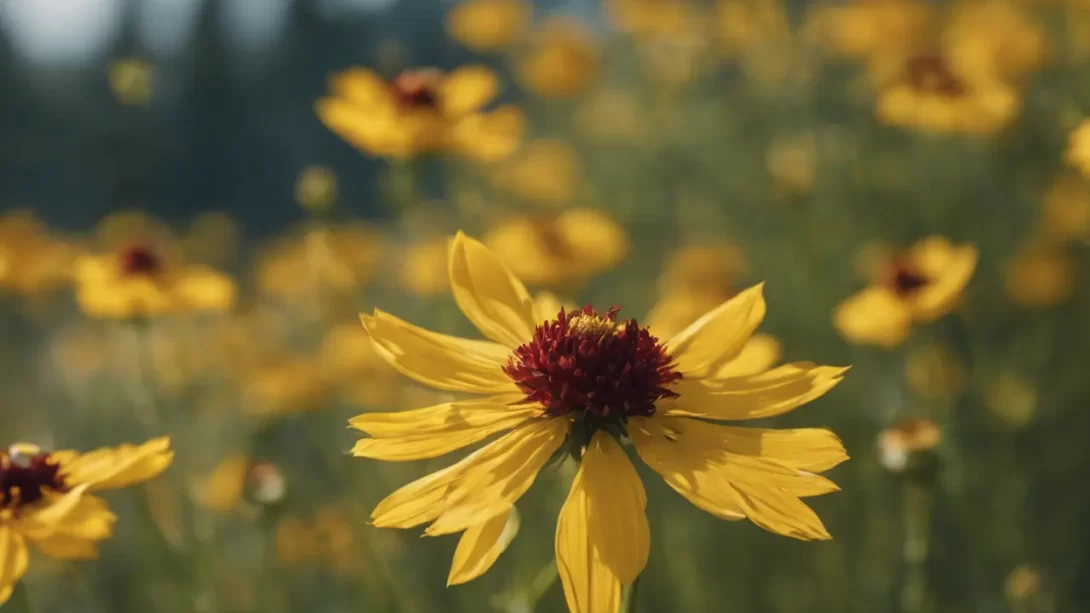Deer, while enchanting to watch, can be a real challenge for gardeners. Among the myriad of plants adorning our gardens, Coreopsis, also known as tickseed, stands out for its vibrant colors and long blooming season. This raises an important question for those with deer-prone gardens: Is Coreopsis a deer-resistant plant? This article aims to shed light on this query, helping gardeners make informed decisions about including Coreopsis in their landscapes.
Deer Feeding Habits
Deer are versatile feeders, but their diet is largely influenced by availability and preference. They typically favor tender shoots and leaves, and often their choices change with the seasons. In spring and summer, they are attracted to lush, green vegetation, while in fall and winter, they are more likely to forage for whatever greenery they can find. Understanding these habits is crucial for gardeners, as it helps in planning and protecting their gardens from these graceful, yet often destructive, animals.
Coreopsis: A Garden Favorite
Coreopsis, belonging to the aster family, is prized in gardens for its daisy-like flowers that bloom from early summer to fall. There are various species and cultivars, ranging in color from bright yellow to deep burgundy. This perennial thrives in well-drained soil and full sun, making it a low-maintenance choice for many gardeners. Its drought tolerance and ability to thrive in a range of soil conditions add to its appeal. Coreopsis not only adds a splash of color but also attracts pollinators, making it a valuable addition to any garden.
Deer Attraction to Coreopsis: Fact or Myth?
When evaluating Coreopsis’ susceptibility to deer, it’s important to consider the plant’s characteristics. Coreopsis, with its fibrous texture and not particularly lush foliage, doesn’t typically rank high on a deer’s menu. However, like many garden plants, it is not entirely deer-proof. The level of deer interest in Coreopsis can vary based on local deer populations and available food sources. While some gardeners report minimal deer damage, others have experienced occasional browsing. It appears that deer may nibble on Coreopsis when their preferred food sources are scarce, but it’s generally not their first choice.
Strategies for Protecting Coreopsis in Deer-Prone Areas
For gardeners in areas with high deer activity, protecting Coreopsis becomes essential. Physical barriers, such as fencing, are the most effective way to keep deer away. A fence should ideally be about 8 feet tall to prevent deer from jumping over. Another approach is the use of deer repellents, which can be either commercially available or homemade. These repellents work by emitting scents that deer find unattractive. Planting Coreopsis alongside more deer-resistant plants can also serve as a deterrent. This method of companion planting not only enhances the garden’s aesthetic but also provides a natural barrier against deer.
Alternative Deer-Resistant Perennials
Incorporating a variety of deer-resistant plants can create a more secure garden environment. Plants with strong fragrances, such as lavender and sage, or those with prickly foliage, like yarrow and echinacea, are generally less appealing to deer. By planting these alongside Coreopsis, gardeners can reduce the risk of deer damage while adding diversity to their garden. It’s important to select plants that not only deter deer but also complement the garden’s overall design and growing conditions. This approach allows for a beautiful, flourishing garden that is less likely to suffer from deer browsing.
Integrating Deer-Resistant Practices with Coreopsis Cultivation
To successfully grow Coreopsis in deer-prone areas, integrating specific deer-resistant gardening practices is vital. Beyond physical barriers and repellents, strategic garden planning plays a crucial role. This includes placing Coreopsis closer to the house or in raised beds, as deer are less likely to venture near human activity. Utilizing motion-activated sprinklers or lights can also deter deer. Additionally, regular maintenance of Coreopsis, such as deadheading and pruning, can sometimes make them less attractive to deer by reducing the tender, new growth that deer prefer.
Local Deer Behavior
The degree to which deer will target Coreopsis can vary significantly depending on local deer populations and their feeding habits. In some areas, deer may have plenty of natural food sources and show little interest in Coreopsis, while in others, especially where natural habitats are limited, they might be more inclined to sample garden plants. Engaging with local gardening communities and extension services can provide valuable insights into how deer interact with Coreopsis in your specific area. This local knowledge can be instrumental in tailoring an effective deer-management strategy for your garden.
Conclusion
While Coreopsis is not a top choice for deer, it is not entirely immune to their browsing. The likelihood of deer eating Coreopsis varies based on local factors and overall garden conditions. By employing a combination of protective strategies, such as physical barriers, repellents, companion planting, and understanding local deer behavior, gardeners can effectively reduce the risk of deer damage. Embracing these methods allows for the successful cultivation of Coreopsis, enabling gardeners to enjoy its vibrant blooms without undue concern for deer. With thoughtful planning and adaptive strategies, a harmonious coexistence between deer and garden can be achieved, leading to a thriving and resilient garden ecosystem.




